Boiler Control BCO
A graphic TFT display with touch-sensitive interface is used for display and operation. Its extremely long service life, together with its light and contrast intensity makes it eminently suitable for the most demanding industrial applications. The graphic menu structures as well as the status indicators and process value archive are stored on a Multimedia Card (MMC) which is inserted into the control unit.
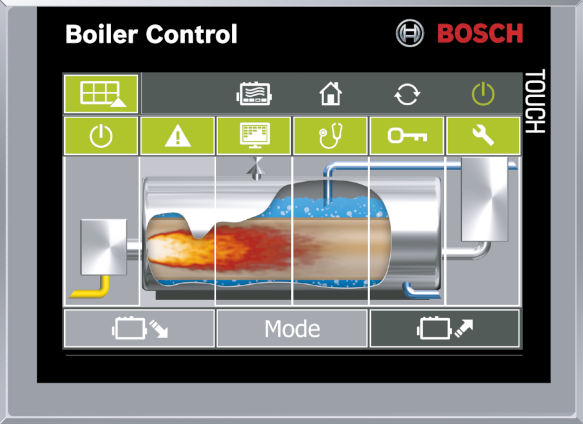
Boiler Control BCO – example of display for steam boilers
Graphical user guidance with outstanding operating data transparency
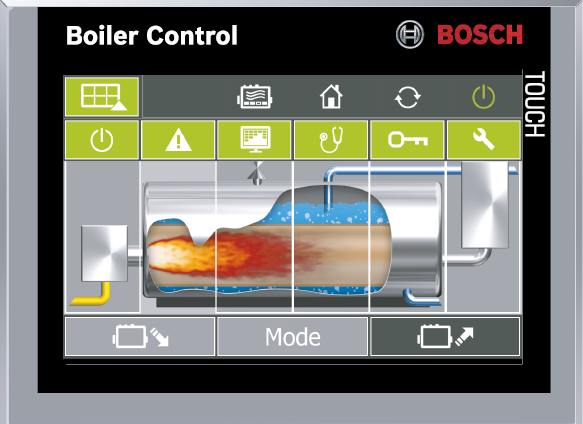
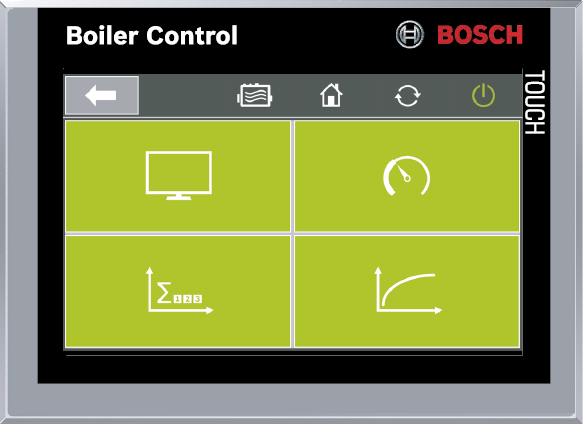
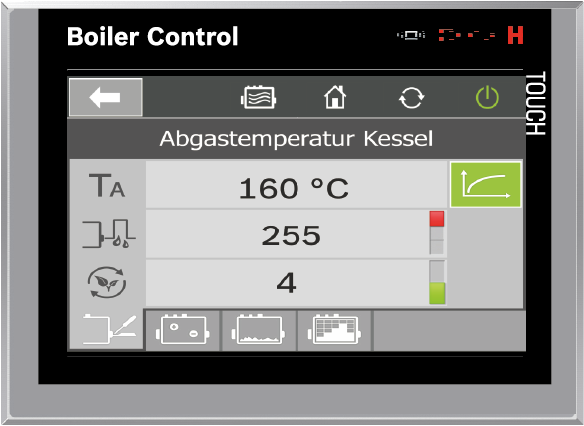
Examples of user guidance at the Boiler Control BCO
To make operation easy, the design of the symbols, graphics and user guidance on the touchscreen displays is based on the latest insights in ergonomics and operability. All available control functions can be called up intuitively and the actual and set values displayed or modified in the colour display.
Many operating conditions, operating data and measurements of the boiler system are already indicated in the graphic display of the Boiler Control BCO with the standard equipment. This always includes the operating hours of the boiler and the burner and the number of burner starts, among other things. All specified switching points, switching differentials and limit contacts can be displayed. Important process data is stored on the memory card of the boiler or system control within a defined interval. The archive has a rolling structure: once the memory is full, the oldest process data is deleted and the newest data is archived. These can then be shown graphically as curves in the displays. The process archive can also be read out by the customer service. The data can be further processed in text or table processing software. Analysis of fuel consumption, steam or temperature progressions can therefore be easily displayed. The high degree of transparency in relation to operating data allows the control parameters to be easily optimised which in turn reduces energy consumption, pollutant emissions and general wear and tear of the boiler system.
Functions in boiler systems
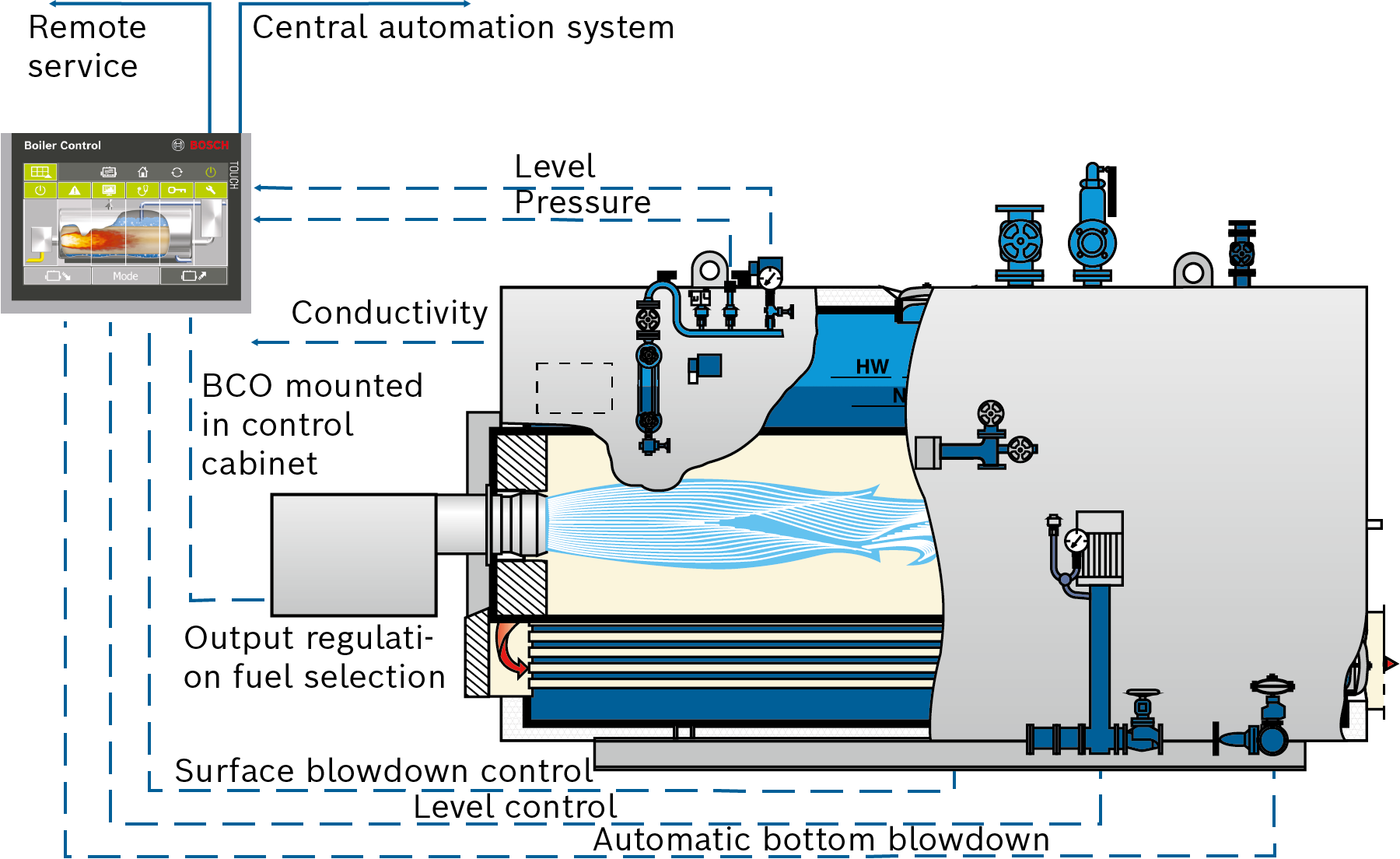
Standard functions of Boiler Control BCO for steam boilers
Boiler Control BCO for steam boiler systems
In addition to the standard output, level, water quality, blowdown and safety chain control functions that feature as standard in every steam boiler, the Boiler Control BCO can also be extended to include the following additional options and functions:
- Automatic starting from cold
- Measurement and control of flue gas temperature for boiler with economiser
- Measurement and control of superheated steam temperature for boilers with super heater
- Measurement of steam, feed water and fuel flow rates
- Automatic feed pump changeover via pressure, time or fault
- Time-controlled heat maintenance mode with pressure reduction
- Display of operating hours, start frequency, number of cold starts over time
- Detection of unfavourable start-up conditions
- Detection of soiling on the water and flue gas side or unwanted condensation
- Generation of service messages according to requirements
- Display of energy losses as a result of bottom blowdown and surface blowdown
- Display of fuel and water consumption over time
- Display of steam removal rate over time
- Display of boiler load profile over time
- Interfacing with higher-level control systems
- Remote maintenance via MEC Remote
- Interfacing with a central automation system
Info on Heat maintenance system
Technical report: automatic start-up control for steam boilersCondition Monitoring (CM)
CM allows customers to monitor their systems to ensure they are running efficiently and are operating normally. To do this, the system data are analysed, evaluated and displayed transparently according to a traffic light model.